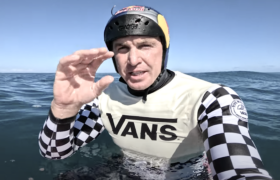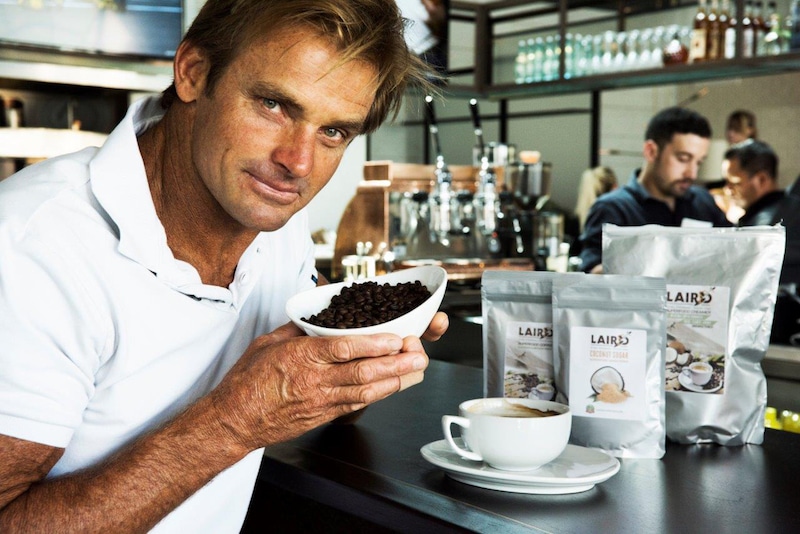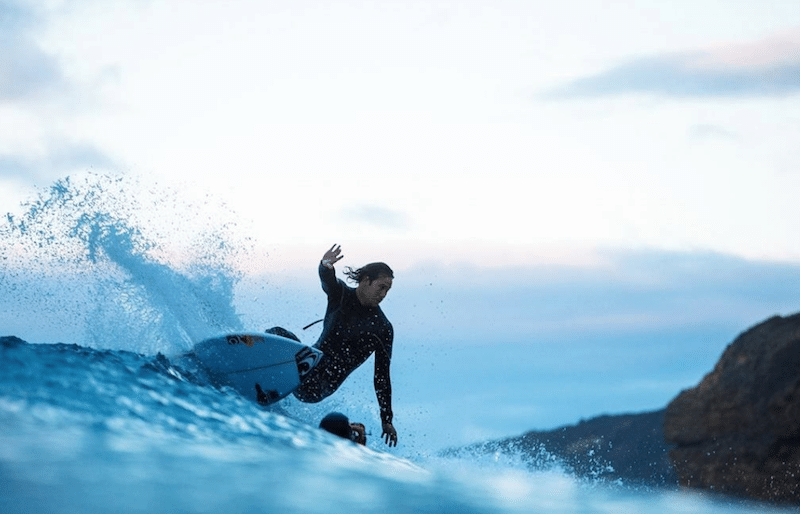Gluten free! Vegan! Non-GMO!
Laird Hamilton, best known for his theories about sharks and women’s periods, has a line of drink mixes, Laird Superfood. According to the brand’s website, Laird apparently had an epiphany one day when he was adding his usual scoop of butter to his coffee. There must be a better way!
I received some samples of Laird Superfood. I tried them, so you don’t have to. Unless you want! I mean, you can! You do you, you crazy diamonds.
Laird Superfood is sold in single-serving 24-gram pouches. They are tastefully designed in shades of green. Gluten free! Vegan! Non-GMO! The logo features the outline of a figure, presumably Laird, riding a SUP. In the logo, he is depicted as a regular foot.
My samples included two flavors: Hydrate, which contains freeze-dried coconut water, and Instafuel, which the packaging describes as “premium instant coffee” with superfood creamer. The Instafuel requires boiled water, which doesn’t feel all that instant. But it does promise to take our coffee experience “to the next level.”
The Instafuel package has a large photo of Laird. He paddles a SUP in a giant, photogenic wave of the sort that Laird is famous for riding. In the picture, Laird, a regular foot is surfing backside on a right. This hurt my brain. It reminded me of the time I saw a stock photo showing a left used to depict Malibu.
But I’m sure all of this is totally fine. Maybe Laird was SUPing switch to make it harder. Maybe that’s what happens when you eat the Superfood. You SUP switch in giant, photogenic waves.
Laird Superfood includes the supplement Aquamin. Derived from ocean algaes, Aquamin contains calcium, magnesium, and assorted trace minerals. The health benefit claims of Aquamin depend on sciencey studies about calcium depletion and bone-density loss during exercise.
According to the manufacturer’s website, Aquamin provides uniquely deliverable calcium supplements that’ll make your bones stay strong even when training or growing old. No word on what it’ll do for your sex life. I know y’all are super disappointed.
When I ate the Superfood I did not immediately acquire the ability to fly or anything useful like that. Presumably it added calcium to my bones, but I felt nothing. Not even a tingle. This was slightly disappointing.
I mixed the Hydrate with bottled water in a 12-ounce container as the instructions demanded. Once mixed, it has a milky, white color. The flavor is nothing to write home about. Not terrible! Just not super exciting.
It needed something. I rummaged around the kitchen and found vodka of questionable vintage. I added the vodka to the Hydrate. Mmm, vodka. I added more. Even better. Then I was out of coconut water Superfood. More Vodka. What were we talking about again, I don’t know. Vodka, good. Next time, I skip straight to vodka. More vodka.
I approached the Instafuel with trepidation. Instant coffee. I once carried a French Press in my camera bag on a bike-packing trip in Oregon. This was a stupid decision, because packing out wet coffee grounds is stupid. But it does give you an idea of my feelings about instant coffee.
I again entered the kitchen to boil the required boiled water, which just about exhausts my kitchen repertoire. I added boiling water to the instant coffee and Superfood mixture. It dissolved! Magic! A thin layer tan bubbles, resembling crema, appeared on the surface. I know this game. I see you, Instafuel! I see you trying to fool me into thinking you are actually good coffee! You can’t fool me.
In graduate school, I did research at the French Foreign Ministry archives, which at the time were housed in the Foreign Ministry building. They took our passports and escorted us through the hallways. We were allowed at intervals to leave the reading room and down in a basement, there was a coffee machine. It dispensed espresso in tiny paper cups. I never figured out how to turn off the sugar, so I downed many tiny, heavily sugared espressos. It kept me awake long enough to read piles of diplomatic documents, but it was not a good coffee experience.
I recount this story, because the Laird Superfood Instafuel reminded me of the coffee dispensed from the machine in the Quai d’Orsay basement. There is a hint of coffee flavor and a creamy mouth feel. An intense coconut flavor, reminiscent of sunscreen, lingers on the palette. As I sipped, I tried to imagine Hawaii and wafting palm fronds and giant, photogenic waves. I failed.
If you like your coffee very sweet and you enjoy coconut-flavored things, Laird Superfood Instafuel is your dream morning libation. It is easy to make! And almost instant! But so is Starbucks Via, which more closely resembles coffee.
Mostly, I’m just sad I didn’t suddenly acquire Laird superpowers. Maybe it’s the wrong time of the month.







